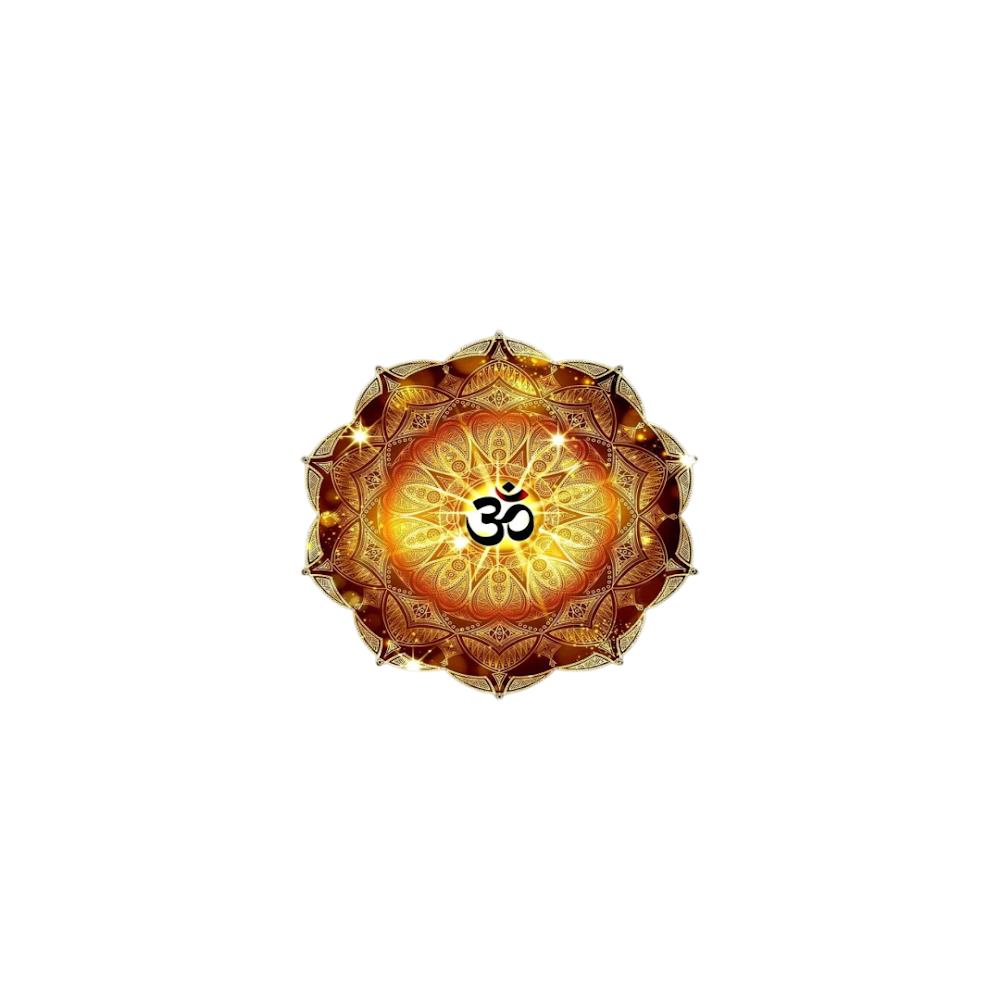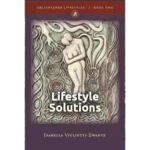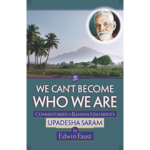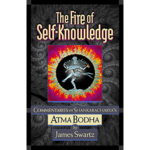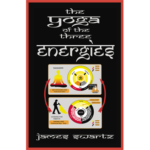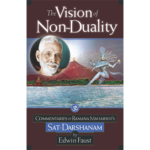Susan Barlettani pointed out recently that when unconscious childhood patterns are triggered, we instantly ‘embody’ whatever negative thought/emotion arises in the mind. As William James wrote in his theory of how our bodies affect our feelings — “A purely disembodied human emotion is a nonentity.” We become our emotions instead of observing them dispassionately and objectively. We forget that we are all beautiful and perfect children of God. How can we be, when the mind is consumed by its distressing thoughts and feelings, our body tense, rigid and in flight mode? In the last century and a half, both the hard and soft sciences have helped us to understand how the body and mind cannot be separated, which is what Vedanta tells us, also.
From nondual perspective, we know that the body/mind is an object known to me, Consciousness. The mind or Subtle Body has a similar relationship to the physical or Gross Body as Consciousness has to mithya (the apparent reality). There is an interdependence from the jiva’s perspective—but not from Consciousness’s point of view because the body and Consciousness exist in different orders of reality: The Subtle body, which contains the Gross body, is mithya or apparently real (not always present and always changing) and Consciousness is satya, real (ever-present and unchanging).
The Gross Body is ‘within’ the Subtle Body and the Subtle Body is ‘within’ Consciousness (you). There is no way to understand this or discriminate Consciousness from the objects that appear in you unless you step out of Maya with Self-knowledge. The rules in the apparent reality are such that everything depends on everything else. The body is an aggregate. So what applies to the Self/Consciousness only applies to the Self and what applies to the body only applies to it. They are in different orders of reality.
Consciousness is not ‘in’ the body but the witness of it – it affects the body in so far as it gives it permission to be, but from that point on it does not interfere. It lets the laws operating in the dharma field take care of the body.
As unreal as the body/mind is, we cannot ignore it without suffering the consequences. It is important to identify binding psychological (thought/emotional patterns) and to see them both in light of the jiva’s story, and from the point of view of Self-knowledge. I spoke earlier this week about the identification of a residual adaptive child program that needed to be acknowledged and released. I saw the price paid in terms of uninterrupted peace of mind in how this pattern played out in my life. As much as I know who I AM, taking the purely nondual view of the psychology of our personal identity will not make binding problems disappear. When they are active they block access to permanent bliss – resting in the satisfaction of I Am.
Spiritual bypasses will not help. As important as the nondual view is to freedom from and for the jiva, so it is to understand how the physiology of the body (gunas) impacts our psychology. To do this, we need to understand how our nervous system works, because all information coming to us from the field of experience, and all information coming from us back to the field, is regulated by our nervous system. It governs all sensory input. How it does this has a huge impact on our physiology, and therefore, our psychology, in an endless cycle.
The nervous system can be divided into two major regions: the central and peripheral nervous systems. The central nervous system (CNS) is the brain and spinal cord, and the peripheral nervous system (PNS) is everything else. The two systems can’t really be separated, but they do have a modus operandi that tends to relate to specific functions. They have opposite but complementary roles. Your CNS is also called the sympathetic nervous system, and the PNS is called the parasympathetic nervous system. Your sympathetic nervous system carries signals that put your body’s systems on alert (rajas and tamas – fight or flight). It takes the lead when your safety and survival are at risk, whether you actually are at risk or not. That system’s actions can strain body systems when it’s active for too long. It’s not stress itself that is necessarily bad for us, but chronic stress and anxiety.
Your parasympathetic carries signals that return those systems to their standard activity levels (sattva). It also manages the autonomic activity in organs throughout your body that you do not have to think about (circulation, digestion, elimination etc.) These functions don’t involve risk or danger but are still key in keeping you alive and healthy. The PNS has a big influence on these systems when you feel calm and safe. Because these two systems offset each other, they help maintain balance in your body.
No part of the autonomic nervous system influences our mental and emotional landscape more profoundly than the tenth cranial nerve — the vagus nerve. It is the longest nerve of the autonomic nervous system that unconsciously governs the inner workings of the body, From the Latin word for “wandering,”, it meanders from the brain to the gut, touching every organ along the way, controlling everything from our heart rate and digestion to our reflexes and moods. It is not a stretch to say that the vagus nerve is the highway along which every thought, feeling, and mood forecast by our neurotransmitters flashes through our body/mind. It is the executive command and dispatch system for the gunas.
The psychiatrist Stephen Porges uncovered two distinct vagal pathways in the nervous system — the much older dorsal vagus (which evolved around 500 million years ago in a fish now extinct) regulates fear response and activates shutdown, and the ventral vagus (a uniquely mammalian development about 200 million old) controls our capacity for connection and communication. This research became the foundation of polyvagal theory — the science of how the interplay of these two systems shapes our sense of safety and danger, our attachment styles and relationship patterns. These two systems shape our ability to tolerate and manage the risks necessary for living in this uncertain and unpredictable world.
No one has championed polyvagal theory more ardently than the clinical psychologist Deb Dana. In her book The Polyvagal Theory in Therapy: Engaging the Rhythm of Regulation (public library), written for therapists, she explores how trauma automates our adaptive responses in a survival story that puts the fear-based dorsal vagus in command to induce collapse and dissociation, and how we can rewire our neural pathways toward the emotional safety of the ventral vagal state, where our capacity for curiosity, connection, and change flourishes.
Dana writes:
“Connectedness is a biological imperative, and at the top of the autonomic hierarchy is the ventral vagal pathway that supports feelings of safety and connection. (We can feel this in the front of our body – the heart area). The ventral vagus (sometimes called the “smart vagus” or “social vagus”) provides the neurobiological foundation for health, growth, and restoration. When the ventral vagus is active, our attention is toward connection. We feel safe. We seek opportunities for co-regulation. The ability to soothe and be soothed, to talk and listen, to offer and receive, to fluidly move in and out of connection is centered in this newest part of the autonomic nervous system. Reciprocity, the mutual ebb and flow that defines nourishing relationships, is a function of the ventral vagus. As a result of its myelinated pathways, the ventral vagus provides rapid and organized responses.
In a ventral vagal state, we have access to a range of responses including calm, happy, meditative, engaged, attentive, active, interested, excited, passionate, alert, ready, relaxed, savoring, and joyful. This biological need for co-regulation with others is not dissimilar to the concept of ‘limbic revision’ — “the power to remodel the emotional parts of the people we love,” and to have our own emotional pathways in turn, remodeled by the people who love us. This is only possible in safe relationships, and it is the vagus system that governs our sense of safety”.
Central to polyvagal theory is the distinction between conscious perception and what Porges termed neuroception — the conditioned way the autonomic nervous system responds from within the body, without our awareness (read – subjective reality or filters), to cues of safety and danger in the outside world. Because our vagal pathways are shaped by our earliest experiences of co-regulation in the infant-parent dyad (the adaptive child program) ruptures in that co-regulation — whether by abuse or neglect — condition the dorsal vagus (fight of flight/shut down) to become dominant, making a neuroception of danger the default response, storying reality away from safety (whether you are actually in danger or not). This is seen nowhere more acutely than in intimate relationships. When this is the case, we are stuck in a fear/anxiety (fear/rajasic/denial/tamasic) response/reactive pattern to our life. This will determine how we interpret everything that happens in our environment.
Dana writes:
“Co-regulation is at the heart of positive relationships. If we miss opportunities to co-regulate in childhood, we feel that loss in our adult relationships. Trauma, either in experiences of commission (acts of harm) or omission (absence of care), makes co-regulation dangerous and interrupts the development of our co-regulatory skills. Out of necessity, the autonomic nervous system is shaped to independently regulate. We will often feel we need connection, but if there was no one in our life who was safe, after a while we stop looking. Through a polyvagal perspective, we know that although we stopped explicitly looking and found ways to navigate on our own, our autonomic nervous system never stopped needing, and longing for, co-regulation.”
Through bad judgement, we may well turn to people who cannot and will not provide us with safety. However we handle this, because our physiology is so intricately linked with our psychology, our life story or narrative, is a combination of both nervous system responses. What is so interesting is that Isvara hardwires the psyche for healing because we know that as the Self, suffering is not natural, no matter how much we normalize the abnormal. If we are after a permanent narrative upgrade as inquirers on a path to moksa – freedom from and for the jiva – it really helps us to understand which neurological system the brain automatically reverts to. What is the default? You can press pause at any time and ask yourself that question. It goes like this: the mind narrates what the nervous system reports, we embody the emotions and the story follows the state, in a self-perpetuating repetitive pattern. It’s not hard to identify.
And so, our early adaptive survival responses train the autonomic nervous system on a default neuroception of danger, replacing patterns of connection with patterns of protection in a fear-based narrative. These binding programs subsume our reality. And yet these reflexes can be recalibrated by retraining our regulatory pathways. As inquirers we need to do this in two ways.
First we identify which nervous system is our default position. Then we visit and claim the inner adaptive child program, acknowledging how it works out in our lives, the typical thought/emotional rajasic and tamasic patterns we embody. Don’t fool yourself into thinking you are the exception to the rule. You are not. We can best see this by how we relate to others in our lives, particularly, but not exclusively, those closest to us. Because the feeling of reciprocity is one of the most powerful regulators of the autonomic nervous system, a great deal of repair and rewiring can happen in relationships if true reciprocity is involved.
Reciprocity in relationships is created and mirrored by the back-and-forth communication between two autonomic nervous systems. When reciprocity is active, there is the experience of heartfelt listening and responding. We are nourished in the experiences of reciprocity, feeling the ebb and flow, giving and receiving, attunement, and resonance. We can truly pay attention to what is actually happening, instead of our conditioned responses. Appling karma yoga and guna yoga works wonders here, as does jnana yoga.
But the great paradox is that if our earliest template of connection is marked by rupture and deficient co-regulation, our very notion of reciprocity may be warped, leading us to tolerate immense asymmetries of affection and attention, to mistake deeply imbalanced relationships for reciprocal, whether they are family, friends or lovers. We unconsciously normalize the abnormal. In this case, our dominant response system will be the sympathetic, fight or flight, nervous system because we will never really feel safe.
There is cause for optimism in identifying the unhealthy patterns and to choose to nurture which will lead to the gradual transition from the dorsal vagal state into the ventral vagal, a gradual willingness to release the patterns of protection in favor of connection, allowing for love to be undefended and to flow unimpeded.
Apart from applying the tools we are given through Vedanta, karma yoga, guna yoga and jnana yoga to all things jiva related, there is a lot we can do to manage the mind and help it to move into a sattvic default position. Make sure that you have a time set out every day for reading the scripture, contemplating it and applying it to your life. Breathing exercises and meditation helps a lot to calm the mind, as does any devotional practice, especially chanting and prayer. Using the voice activates the parasympathetic pathways because the vocal cords are very close to the vagus nerve. Laughter is a great healer too.
Find ways to appreciate the silliness of life. and share a joke with a friend or loved one. Know who your true friends are, and nurture them. Don’t invest time in people who bring you down or let you down. Be very discriminating in the company you keep. Yoga, exercise and good nutrition are very important. Just sitting in silence and doing nothing is very important too. Track the mind, see when it flips into fear/anxious systems mode, and gently bring it back to safety. Don’t beat yourself up if you slip. It may take a lot of courage and practice. Become a disciple unto yourself.
Sundari
